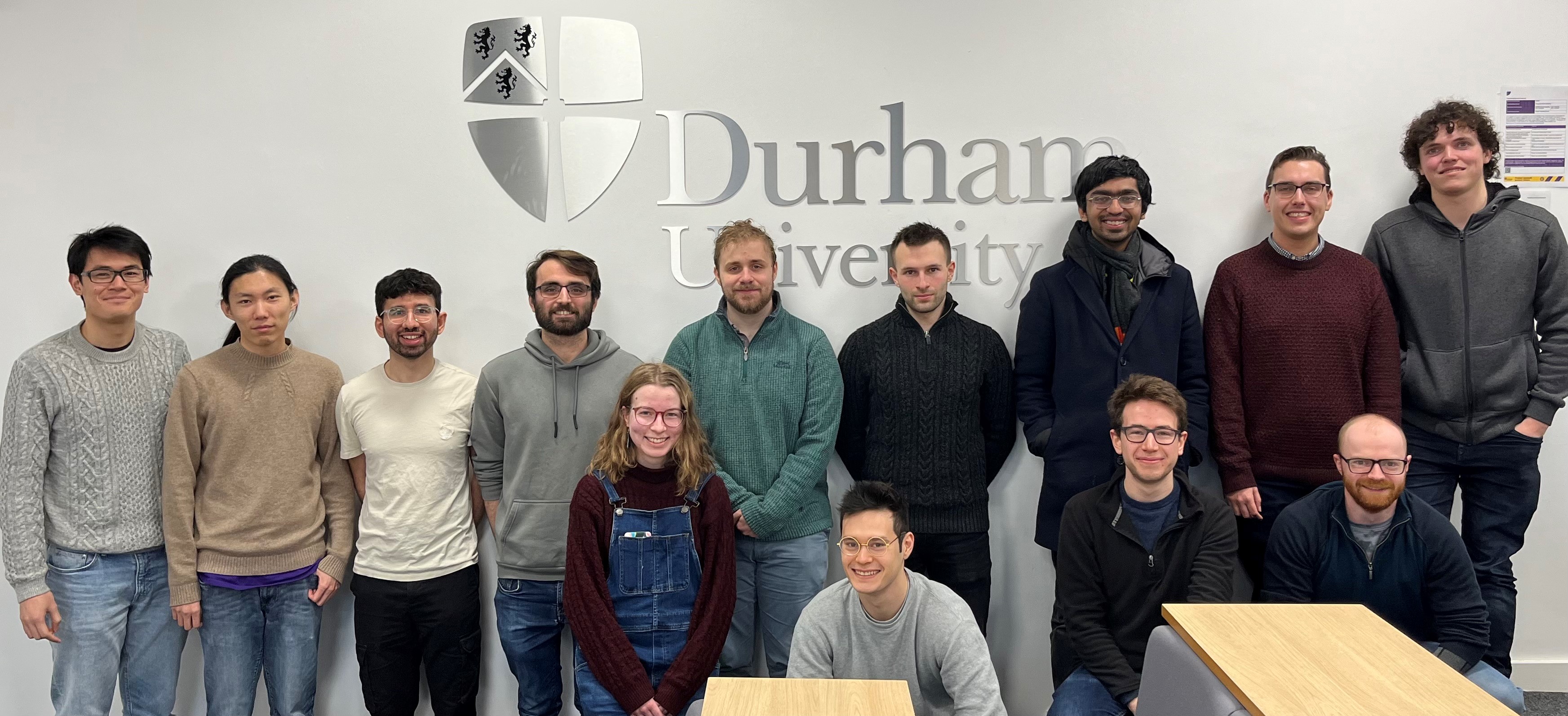 Current PhD students in the QLM
Current PhD students in the QLM
When you join Durham Quantum Light and Matter (QLM) as a PhD or Master by research student, you’ll become a member of a friendly research section home to almost 50 members,
including permanent staff, research fellows, research associates and PhD students.
Each graduate cohort receives training in skills required to excel in the program. This includes lecture courses in atom-light interactions and advanced data analysis,
and experimental skills workshops on CAD design and optics. Students and postdoctoral researchers are all given a desk in the shared office enabling easy sharing of ideas and problem solving.
Each week begins with our group meeting, when each team member is given the opportunity to share updates from their project. During term time we host weekly seminars from
external speakers. These is also the opportunity to travel and attend international conferences and meet researchers from around the world. These are just some of the
opportunities and benefits available to members of the group.
We have a selection of funded PhD projects available for an October 2024 start (listed below). In addition we support the application to scholarships. Futher information regarding the application process can be found here.
Available Projects
Previous Projects
We hope that you will join us and become a part of the QLM!
High Speed Terahertz Imaging using Rydberg Atoms.The terahertz (THz) frequency band lies between the infrared and microwave regions of the electromagnetic spectrum. Because THz radiation is non-ionising and passes through materials such as paper, cloth, and plastics, it finds applications including security screening, biomedical imaging, and production-line monitoring. The THz region has traditionally been a difficult frequency range to work in because it falls between ranges of electronic and photonic devices - This is known as the ‘terahertz gap’ and although significant progress has been made to close this gap, applications are still limited by the low power output of THz sources and the low speed and sensitivity of THz detectors. In Durham, we have recently developed a new technology for terahertz imaging that uses Rydberg atoms to convert terahertz radiation to optical fluorescence. This has allowed unprecedented speed and sensitivity in image acquisition. This experimental Ph.D. project will push our technology to the next level by using laser pulse sequences to allow very short exposure images. This will allow very fast phenomena, such as shockwaves, to be studied in optically opaque media. The work is linked to the National Quantum Technology Hub programme and Industrial partners. Further information available here or contact Prof. Weatherill. Back to table |  |
Ultracold mixtures of caesium and silver for the association of very dipolar moleculesUltracold molecules are an important new platform for quantum science. Large electric dipole moments enable long-range interactions that cause quantum entanglement between different molecules in the gas. Meanwhile, quantum information can be encoded in the rich structure of rotation and vibration states of the molecules. At Durham, we have had great success in creating ultracold molecules by association from pre-cooled atomic mixtures. In this project, we will develop a new experiment for the study of ultracold mixtures of caesium and silver atoms. Diatomic CsAg molecules associated from this mixture would exhibit dipole moments up to 13.5 D, yielding dipolar interactions 1-2 orders of magnitude stronger than are available in current experiments. This is a new experimental project, for further information contact Dr. Gregory. Back to table |
 |
Vector light project.The Durham Quantum Light and Matter group is internationally leading on experiments in the field of spectroscopy of atomic vapours. Most treatments of the propagation of light through a medium assume that the polarisation vector is two dimensional, i.e. restricted to the transverse plane. Recent study has shown that far more interesting and useful three-dimensional structures can be obtained by tightly focussing a laser beam. We have shown in Durham that using shaped light enables the production of topologically non-trivial polarization. The objective of this project is to analyse the spectrum of Rb vapour in large magnetic fields (we have our own 1.5 Tesla permanent magnet with different polarization states. The goals of the project are: (i) a complete characterization of the spectroscopy of Rb vapour in large magnetic fields with tightly focussed fields; (ii) to investigate the interaction of atoms with topological light; (iii) explore the possibilities of producing next generation sensors based on the interaction of structured light with atomic media. Further information available here or contact Prof. Hughes. Back to table | 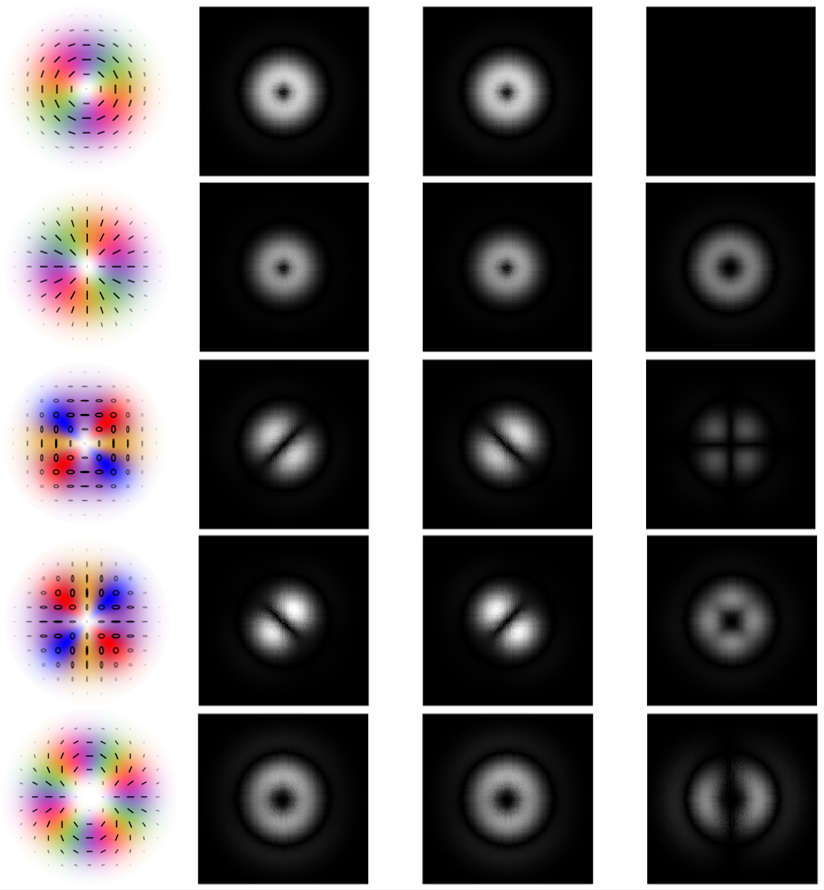 |
Laser cooling molecules for quantum simulation.Laser-cooled molecules offer new opportunities in quantum science and technology. By using closed cycling transitions we are able to decelerate, trap, cool and detect molecules. The goal of this experiment is to load a lattice of ultracold calcium monofluoride molecules to be used as a platform for quantum simulation. These molecules experience large, anisotropic dipole-dipole interactions, and high levels of control over internal and external degrees of freedom have already been demonstrated. This is an experimental project during which you will learn skills in laser and vacuum technology, build an understanding of molecular physics and contribute to the rapidly expanding field of molecular quantum technology. Further information available here or contact Dr. Williams. Back to table | 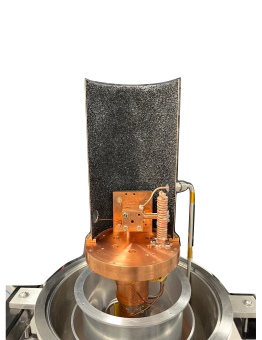 |
Quantum degenerate mixtures of Cs and Yb: quantum droplets and polar molecules.We have the only experiment in the world studying ultracold atomic mixtures of Cs and Yb. This combination of elements is exceptionally rich and offers unique opportunities for independently controlling the individual gases. In this project you will exploit these properties to study the quantum dynamics of dual-species Bose-Einstein condensates and to investigate new ways to assemble the atoms into heteronuclear molecules. Further information available here or contact Prof. Cornish. Back to table | 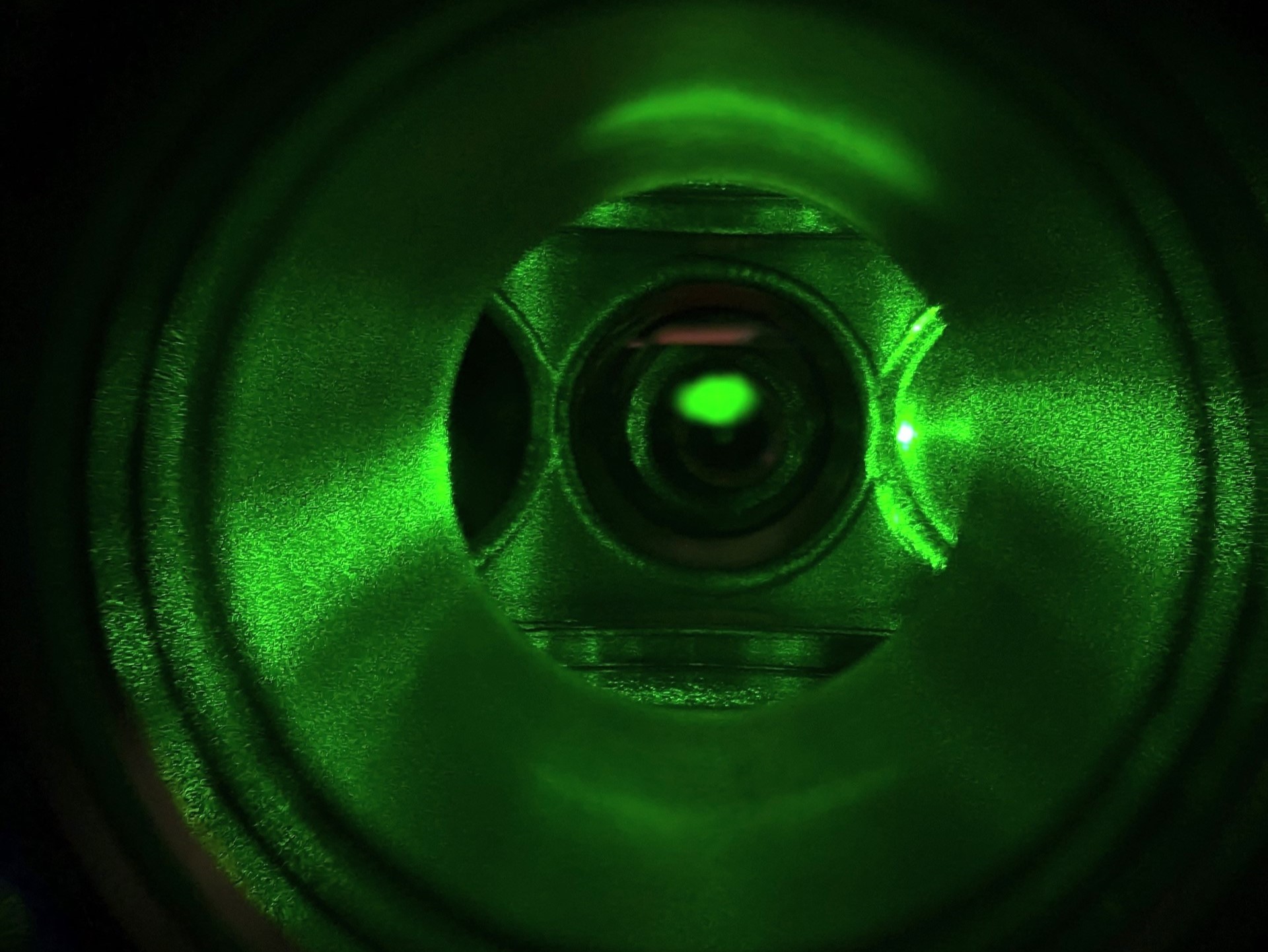 |
EPSRC ICASE Studentship on Quantum SensorsRadio Frequency (RF) sensors based on highly-excited ‘Rydberg’ atoms offer very high sensitivity and a huge operational frequency range spanning kHz to THz. In this project we will build upon our recent work (Allinson et al. arXiv:2311.11935) to use the higher orbital angular momentum (OAM) states of Rydberg atoms to access lower RF frequencies in both hot and cold atomic samples. We will also perform proof of principle measurements of RF polarisation and angle of arrival using these higher OAM states. This 4-year Ph.D. project is sponsored by Leonardo UK Ltd, a leading aerospace company and one of the biggest suppliers of defence and security equipment to the UK MoD. At Durham, the student will perform atomic and optical physics experiments using state of the art equipment. They will help devise and build bespoke optical setups to achieve optimum sensitivity of the Rydberg-atom-based detectors. Furthermore, the student will engage closely with Leonardo over the four-year period with regular meetings and at least three months’ worth of placements at their Luton site. Further information available here or contact Prof. Weatherill. Back to table |  |
TENK+: Next generation architectures for neutral atom quantum computers beyond 10,000 atomsThis 4-year studentship is sponsored by the National Quantum Computing Centre National Quantum Computing Centre - www.nqcc.ac.uk The aim is to develop a new approach to creating three-dimensional arrays of ultra-cold strontium atoms, which can be addressed and read out individually, forming the qubits of a quantum computer. Currently, quantum computers based on two-dimensional atomic arrays (like the one produce in Durham and shown in the picture) are one of the platforms for quantum computation, with several companies now offering machines of ~100-1000 qubits for sale. However scaling to ~10,000 qubits will require new technologies, and an attractive approach is to use the third spatial dimension as the arrays can be made more compact, and the connectivity between qubits is improved. You will collaborate with the group of Dr Aidan Arnold and with the NQCC to develop custom optics for implementation in an existing strontium laser cooling experiment at Durham There will be the opportunity for visit, training and short placements at both locations. For further details about the ultracold strontium experiment click here. For further details about this position please contact Prof Matt Jones. Back to table | 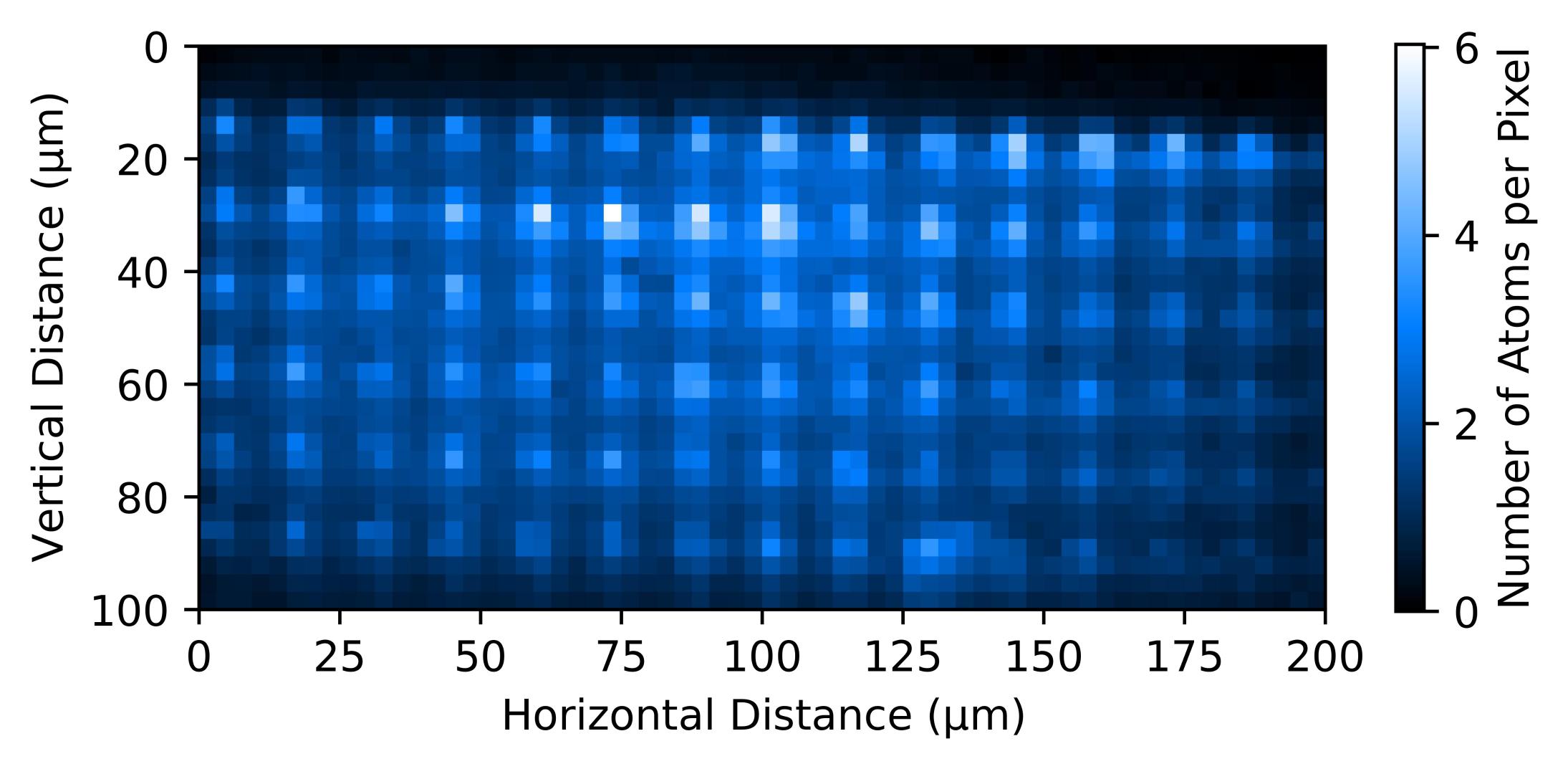 |